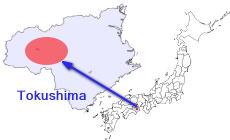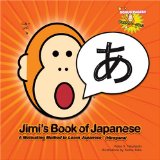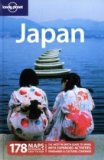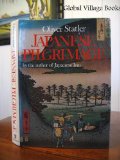IYA VALLEY (祖谷渓谷) - TOKUSHIMA
 Miyoshi city, Tokushima Prefecture
Miyoshi city, Tokushima PrefectureIf there are three places you should visit in Shikoku, the Iya Valley (祖谷渓谷 Iya Keikoku) must be one of them.
The Iya Valley is one of Japan’s three hidden regions, is located in the western part of Tokushima prefecture and nearly in the center of Shikoku.
Iya can be divided into two areas, the more populated West Iya (Nishi-Iya, 西祖谷) and the more remote East Iya (Higashi Iya, 東祖谷) which is also called Oku-Iya (奥祖谷).
It lies along the emerald-green Iya River whose total length is 10km. The isolated deep valley with the several meter to 100 meter-difference in elevation along the ravine can make you understood why the Iya Valley was used to be refuges for fleeing Heike warriors defeated by the Minamoto Clan at the end of the Heian period.
.jpg) |
Fast Fact - Iya Valley
Iya’s well-known attractions are precarious-looking vine bridges, Oboke-Koboke Gorge, Iya-kei Onsen (Hot Spring) and Mt. Tsurugi, the second-highest peak in Shikoku.The Iya valley is a great place to escape from the hustle and bustle of Japan’s big cities, but if you still feel like escaping from touristy West Iya, visit the more remote East Iya. East Iya is still hard to enter, thus untouched natures still remain.
Cross the scary the Kazura-bashi (vine bridge) above the clean and beautiful river in West Iya, take a boat ride at Oboke-Koboke Gorge with the superb nature, relax at the Iya-kei Onsen while enjoying the view of the river and the valley, try the self propelled, wooden cable-cart in East Iya, and try some delicious local products such as Iya soba (Iya buckwheat noodles)!!
Highlights in the Iya Valley
Oboke Koboke GorgeOboke and Koboke are the valleys formed as a result of the erosion of the crystalline schist by the powerful force of the Yoshino River.
Oboke literally means that it’s dangerous with big strides, and Koboke means that it’s also dangerous even with small strides. It’s said so because Oboke and Koboke, which are located in the upper reaches of the Yoshino, are considered quite dangerous due to the series of V-shaped sheer valleys and the fast river.
Take a sightseeing cruise at Oboke-kyo Mannaka, 大歩危峡 まんなか (¥1000 for 30 min loop, 9:00am-17:00pm, all year): They also have a restaurant and a rental car section (1000cc class ¥3000/3h ¥9000/24h); Take a bus for Awa-Ikeda (阿波池田) at JR Oboke station (大歩危) and get off at Oboke-kyo (大歩危峡) stop. 1 minute walk from there.
More adventurous types will be white-water rafting in the class 4 rapids. The rapids are Japan's biggest and most exciting, with amazing rock formations and crystal clear waters. Happy Raft: +81 0887-75-0500; Arranges half/full-day rafting trips from ¥5500/10000 (cash only). English spoken.
Kazura-bashi (vine biridge)
(From dawn to dusk; admission ¥500; lighting-up from dusk to 21:00pm -- Not allowed to cross the bridge while lighting-up)
Kazura-bashi is the suspension bridge which is said to be one of Japan’s three rarest bridge. It is 45 meters long, 2 meters wide and the height from the water level is 14 meters.
Today, it is reinforced with metal wires for safety, but it’s worth crossing the bridge to test your courage! You might stand frozen in the middle of the bridge when you look down and see the river below through the net-like bridge. Try to cross it even though you are not standing straight and look wack!!
Access: About 1 hour from JR Awa-Ikeda station (JR阿波池田駅) by bus; 26 minutes from Oboke-kyo by bus; about 20 minutes from JR Oboke station (JR大歩危駅) by bus; 3 minute walk from Kazura-bashi bus stop (かずら橋バス停).
Higashi-Iya (East Iya)
Oku-Iya Kazura-bashi (vine bridge)
There are the twin bridges called “Oku-Iya Niju Kazura-bashi” in Higashi-Iya. They are smaller than the Kazura-bashi in West Iya, but they look more authentic and remote with less visitors. It’s said that those vine bridges were supposed to be cut off if the fleeing Heike warriors would see chasers of the Minamoto Clan. The isolated and deep valley can give you the image of the idea easily. Don’t forget to try the self propelled, wooden cable-cart there!! It’s a must-try and fun!
There is a camping site (Oku-Iya Kazura-bashi Camp-jo, 奥祖谷かずら橋キャンプ場) near here.
Access: 2h30m by car from Awa-Ikeda station (阿波池田駅) of JR Tosan line; 45km (1h30m) from R32 “Oboke (大歩危)”; 2h30m from Igawa-Ikeda IC (井川池田IC) or Mima IC (美馬IC) by car
Mt. Tsurugi
Mt. Tsurugi (剣山 Tsurugi-san, 1955m) is the most popular hiking destination and the 2nd tallest in Shikoku, the tallest in west Japan and Shikoku being Mt. Ishizuchi in Ehime prefecture.
Onsen (Hot Springs in Iya)
Iya-kei Onsen, Hotel Hikyo-no-yu (秘境の湯): Adult ¥1,000; from 10:00am to 21:00pm; Wed-Mon. It is in West Iya.Hotel Iya Onsen (祖谷温泉): It is one of three “Hidden Onsen,” the other being Niseko-Yakushi Onsen in Hokkaido and Yachi Onsen in Aomori; A cable car take you down to the outdoor bath at the bottom of the deep valley; From 7:30am to 18:00; Adult ¥1,500 for the outdoor bath by cable car and the landscape bath, child ¥800; Adult ¥500 for the landscape bath, child ¥300.
More information about Iya Gorge Hot Springs…
Festivals
Jindai Odori festival: Jun 25 on the lunar calendar; Nishi IyaIya Heike Festival: Oct 25; Nishi Iya
Oku-Iya Summer Festival: Aug 13; Higashi Iya
Access to Iya Valley
Getting in remains a little more difficult than other Japanese destinations.By train
The nearest train station is at Oboke, which is along the JR Dosan Line between Kochi and Takamatsu. The hourly Nanpu which runs from Okayama stops here (1 3/4 hours, ¥4410).
From Oboke you can connect to a bus through a tunnel into West Iya, but services are infrequent: there are up to eight buses per day on weekends only in the high season (April-Nov), and just four per day the rest of the time.
By bus
There are 7 direct buses daily from Ikeda's Awa Ikeda Bus Terminal (阿波池田BT), which pass by JR Ikeda Station and travel to West Iya either via Oboke (4 daily) or via Iyaguchi and Iya Onsen (3 daily). See Yonkoh for a timetable, in Japanese only; select "祖谷線" (the Iya Valley line) and then look for Awa Ikeda (阿波池田BT) or Ikeda (池田駅前) departure times. The buses terminate at Kazurabashi (かずら橋) in West Iya or Kubo (久保) in East Iya.
By car
If you have your own set of wheels or want to try your luck hitchhiking, Route 438 from Sadamitsu and Route 439 from Anabuki connect directly into East Iya, and offer the fastest route if arriving from Tokushima and Kansai. If you are heading to Mt Tsurugi (剣山) from Sadamitsu (貞光) there is a regular bus service along Route 438 but only as far as the base of the mountain. Coming from Mi no Koshi (見ノ越), figure on a four hour walk down the mountain to get to the bus stop. Note that traffic is very light, especially on weekdays, and the roads are quite narrow and twisty.
View Larger Map
Get Around
It’s more beautiful if you go deeper into the inner area. However most sights in Iya are widespread and it’s more difficult to get to by public transport. If you are planning to go to East Iya (Higashi-Iya), it’s better to rent a car in larger cities.There are infrequent buses traveling between Awa Ikeda and Oboke-Koboke.
Where do you want to go in Shikoku?
Shikoku Henro (Shikoku Pilgrimage)
How to get to and around Tokushima
From Kansai international airportShinkansen route
Japan Railways
Highway bus route
Subway lines in Kansai
Buses in Shikokui
Related pages
What you need in Japan and before/after in Japan
 |
 |
 |
 |
 |
 |
Find more...